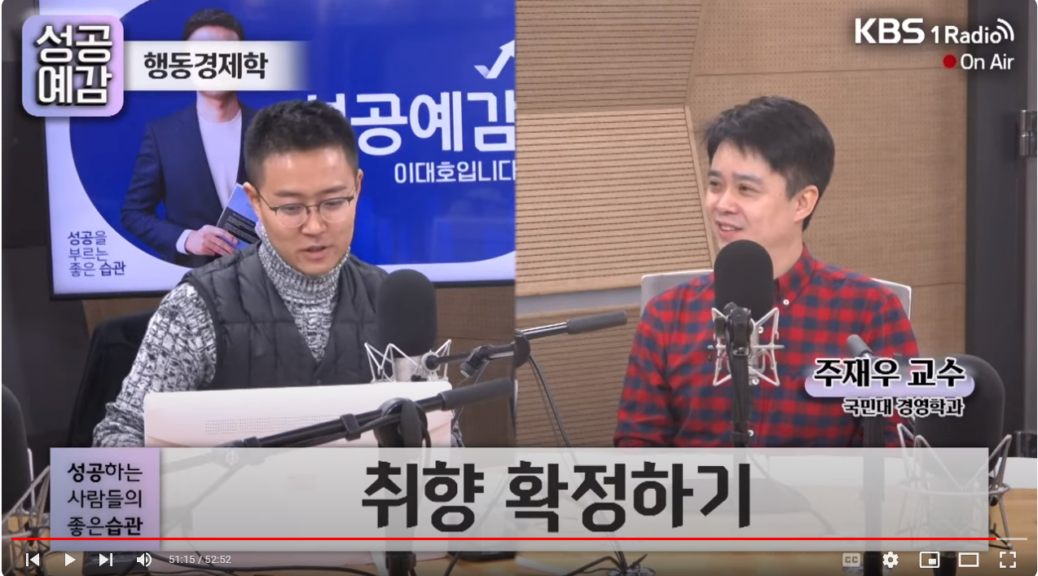남의 취향을 눈으로 배우고, 나의 취향을 머리로 찾은 다음에, 그 취향을 경험으로 확정하는 거군요.
– 그런데, 경험은 주어진 가설을 지지하는 방향으로 해석됩니다. 즉, 광고를 가설로 먼저 접한 뒤에 제품을 경험하면, 광고에 맞게 경험을 해석합니다. 최근 많은 팝업스토어가 열리는 이유도, 회사의 가설에 맞추어 방문객이 경험을 해석하기를 기대하는 것이라고 볼 수 있습니다.
*행동경제학
취향 확정하기
– #취향 배우기, 취향 찾기 이후 마지막 단계
– 취향 확정이 필요한 이유, 경험의 중요성
– #팝업스토어 활성화 등 #고객마케팅 방향 등
– #주재우 교수 (국민대 경영학과) #KBS1라디오 #경제라디오 #성공예감이대호입니다 #성공예감 #이대호
***
Reference
Hoch, S. J., & Ha, Y.-W. (1986). Consumer learning: advertising and the ambiguity of product experience. Journal of Consumer Research, 13(2), 221–233.
This paper examines the influence of advertising on how and what consumers learn from product experience. A hypothesis-testing framework is adopted where consumers treat advertisements as tentative hypotheses that can be tested through product experience. Two experiments were conducted using product categories that provided either ambiguous or unambiguous evidence about product quality. The first experiment showed that when consumers have access to unambiguous evidence, judgments of product quality are dependent only on the objective physical evidence and unaffected by advertising. However, advertising had dramatic effects on perceptions of quality when consumers saw ambiguous evidence; judgments and product inspection behavior protocols showed that advertising induced consumers to engage in confirmatory hypothesis testing and search. The second experiment showed that advertising influenced quality judgments by affecting the encoding of the physical evidence; retrieval of ad-consistent evidence also appeared to occur, though to a lesser degree.









